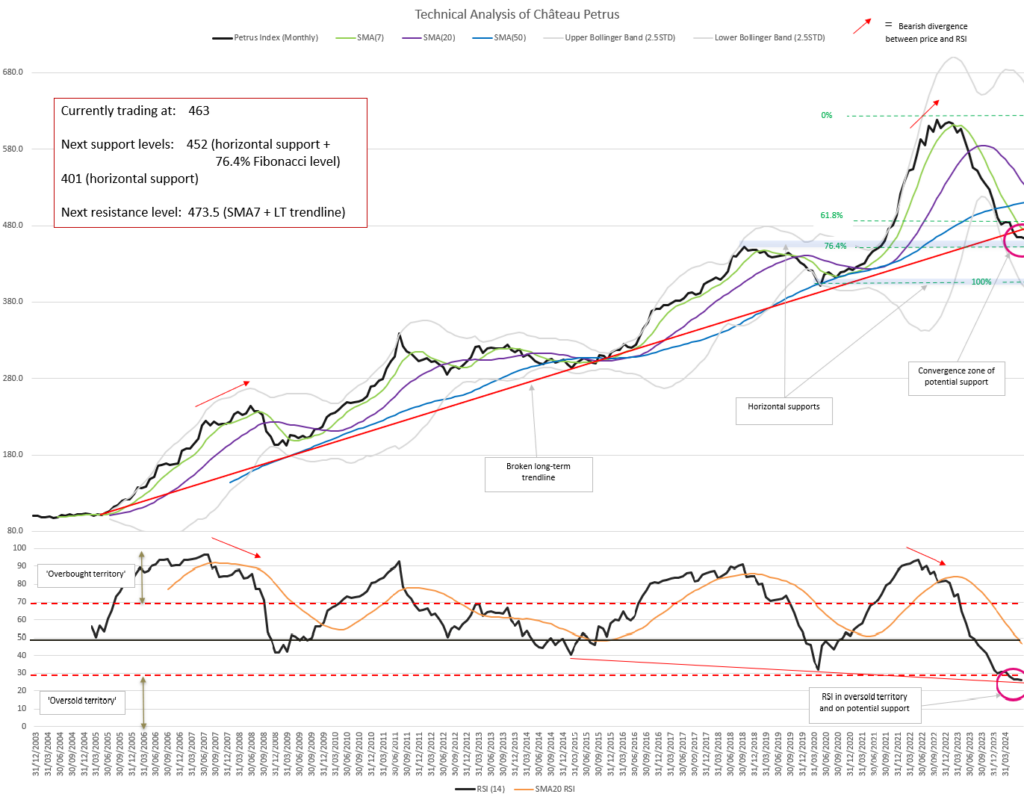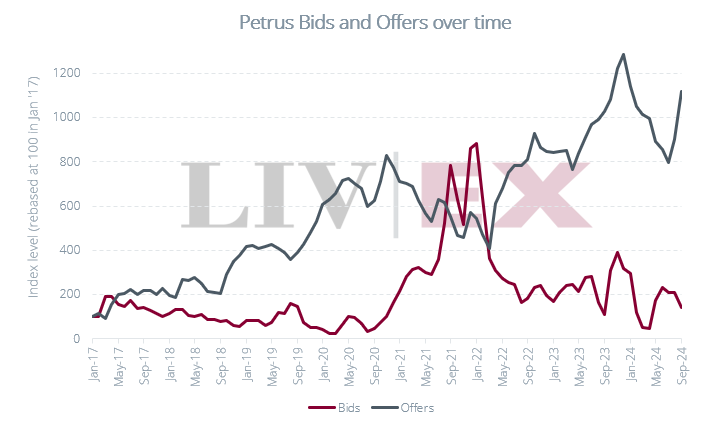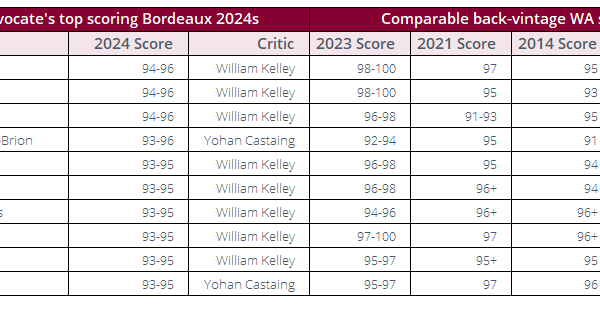What’s happening in the market?
First Growths have led the market so far this week, with Château Lafite Rothschild and Château Margaux coming in as the top-traded wines by value. Screaming Eagle’s Oakville Cabernet Sauvignon came in third, with the 2010, 2018 and 2021 vintages trading actively.
La Place de Bordeaux initiated its September releases on Monday. So far, Opus One 2021, Masseto 2021, Cheval des Andes 2021 and Almaviva 2022 have been released. Of these, Opus One and Masseto have proved the most fairly priced on the international market.
Today’s deep dive: Petrus – a pricing analysis
Petrus is the third top-traded wine by value so far this year, following only Château Lafite Rothschild and Château Mouton Rothschild. While the wine trades actively on the exchange, prices have fallen since the start of the year. Today, combining technical analysis techniques with measures of sentiment in the Petrus market, we gain more insight into possible future price movements of one of Pomerol’s most valuable wines.
Since the index’s inception in 2003, prices of Petrus have exhibited a strong and steady bullish trend, increasing sixfold by September 2022. Since then, however, the index has experienced a sharp decline of 25%. In April 2024, the index broke its long-term ascending trendline and prices now sit below the 7-, 20-, and 50-month Simple Moving Averages. While the SMA50 remains upward sloping, maintaing the long-term bullish trend, both the SMA20 and SMA7 are downwards sloping. In both the short and medium term, the market for Petrus is firmly bearish.
To determine the likelihood of a trend reversal, volatility, as measured with Bollinger Bands, can be a helpful predictor. Decreasing volatility (a price squeeze) tends to predate upward movement of the index, as seen in this example in 2008, 2015 and 2020. Currently, the Bollinger Bands remain wide open – the index’s volatility showing no imminent signs of diminishing. The widening lower band indicates we will continue to see unpredictable downward price swings.
The index’s Relative Strength Index (RSI) currently sits at 26.2, deep into oversold territory (below 30). As has been the case in previous price cycles, the large degree of separation between the RSI and its own SMA20 may be an indication of an upcoming pullback. The RSI is currently testing a downward trendline, which could provide some support.
Looking at Petrus’s bid-to-offer ratio, we find that, while the RSI sits below 30, this has not apparently triggered a ‘buy signal’. The chart below shows the value of bids and offers for all vintages of Petrus over time, rebased at 100 in January 2017. As can be clearly seen, offers have sharply increased over the past few months, while bids have substantially decreased. Currently sitting at 0.19, the ratio has been decreasing since the start of June, which may indicate weakening sentiment in the wine’s market.
While the RSI’s test of the trendline is possibly a positive sign, other technical indicators point to continued weakness. The index may find support at the 76.4% – 76.8% Fibonacci retracement zone, but failing this it’s likely to continue falling towards its September 2021 lows.
The outlook for the Petrus index may not be rosy, but this presents an opportunity for buyers. As we recently detailed in a Market Update on percentage differences between Market Prices and Mid Prices, buyers stand to obtain the largest discounts while the market is moving down. So far this month, trades of Petrus have occurred, on average, 21.5% below Market Price. By comparison, in August, trades took place 17.4% below, and in July, 13.7% below.
Petrus has been a consistently good long-term investment. If the long term historical trend is a guide, because of its quality, fame and uniqueness, it will find its feet again. Now may be the time to take advantage of low pricing and high availability, rather than searching for above-market bottles at the peak.
Given rapidly increasing offer exposure, there are plenty of opportunities available on the exchange. Currently, of the 191 LIVE offers of Petrus on Liv-ex, 21 are 10% or more below Market Price.
Liv-ex analysis is drawn from the world’s most comprehensive database of fine wine prices. The data reflects the real-time activity of Liv-ex’s 620+ merchant members from across the globe. Together they represent the largest pool of liquidity in the world – currently £100m of bids and offers across 20,000 wines.






